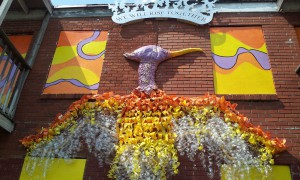 The Race Action Area formed in 2013. Participants work with social change artists, activists, culture bearers and philanthropists to address structural racism, resist white supremacy, and advance equity for all. The group is currently engaged in a collaboration with Grantmakers in the Arts to support their Racial Equity in Arts Philanthropy: Statement of Purpose
The Race Action Area formed in 2013. Participants work with social change artists, activists, culture bearers and philanthropists to address structural racism, resist white supremacy, and advance equity for all. The group is currently engaged in a collaboration with Grantmakers in the Arts to support their Racial Equity in Arts Philanthropy: Statement of Purpose
Led by Judi Jennings and Eleanor Savage, Senior Program Officer, Jerome Foundation, the goals for the collaboration are:
- Building a wider base of knowledge relating to racial equity in the arts and culture field;
- Building capacity to address inequity by sharing information, tools and case studies;
- Building a unified national case for racial equity in arts and culture philanthropy among public/private funders and artists, culture bearers and creative changemakers.
The main focus areas are:
1) Weaving state-based and national racial equity strategies. Eleanor Savage is currently engaged in a learning, dialog and information gathering process with Minnesota arts and culture funders committed to advancing racial equity.
2) Sharing and strategically using case studies that advance racial equity. For example, Judi Jennings and ACSJN Steering Committee member Denise Brown are developing a GIA Reader article with two case studies on collecting demographic information as a methodology—and potential barrier—to advancing racial equity in arts and culture philanthropy.
3) Sharing tools to open dialog and create conversations about race. For example, members of Grantmakers in the Arts adapted artist and activist Lois Weaver’s performance framework called “The Long Table” for a session at their annual conference in 2014. As conceived by Weaver, The Long Table is a hybrid performance-installation-roundtable-discussion-dinner-party format designed to facilitate public engagement among people with common interests. It experiments with participation by using a dinner table atmosphere as public forum, and encouraging informal conversations on serious topics. The format is literally a long table set up with chairs and refreshments where everyone is welcome to the table – to ask questions, make statements, leave comments on the paper tablecloth, join the table, leave the table, or simply sit, watch, and listen.
The GIA session used Weaver’s Long Table format to introduce and reflect on recent initiatives in racial equity, discuss barriers to this work, and explore effective actions and strategies to overcome these barriers by funders and community members. Here is the “etiquette” adapted from Lois Weaver’s Long Table format used for the session at the 2014 Grantmakers in the Arts Conference: